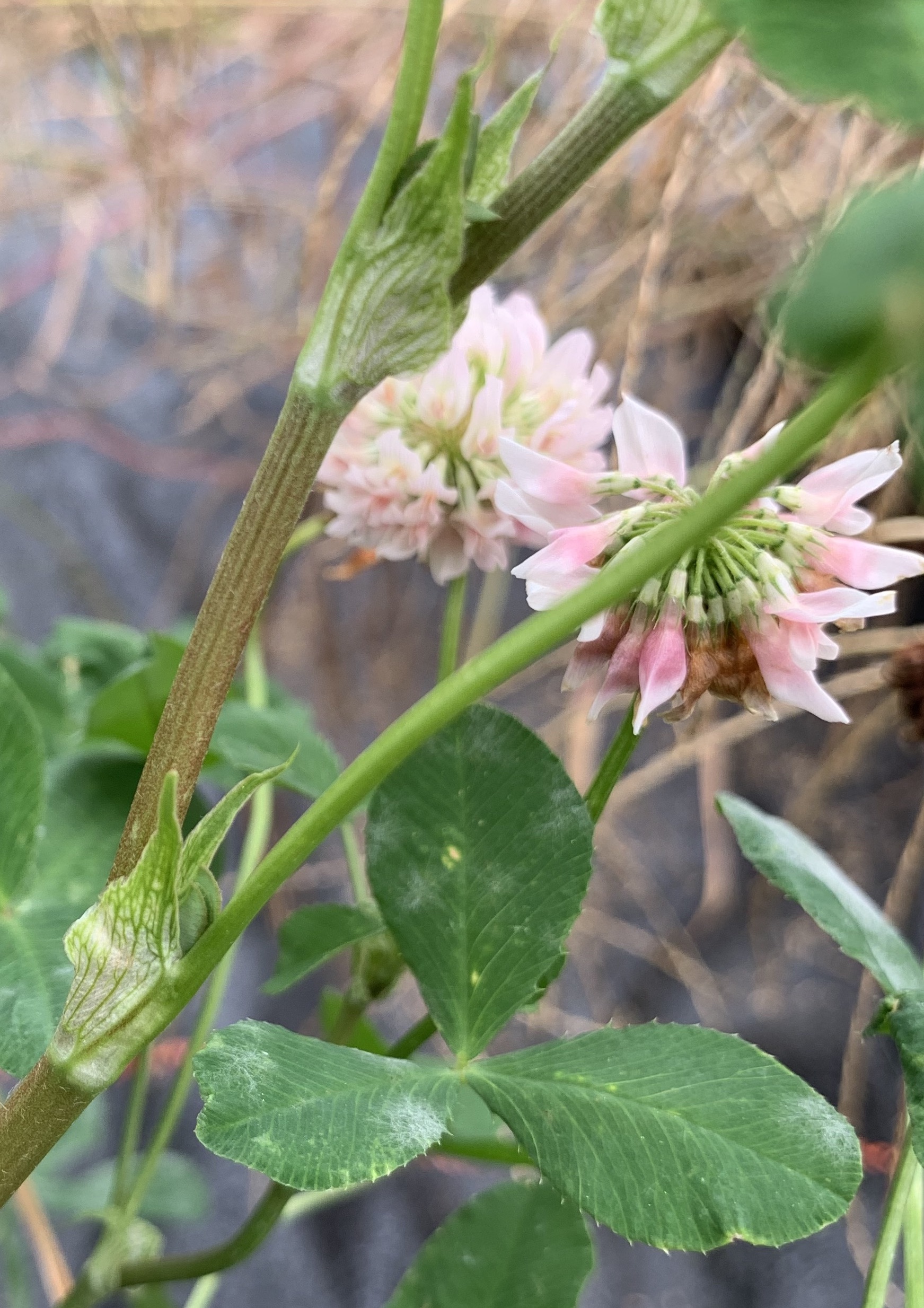| Scientific name: | Trifolium hybridum |
| Cultivars: | Diploid types(common variety mostly used in North America) Tetraploid types (large leaves, flowers, late maturing, and are mostly European) |
| Origin: | Sweden; in North america since ~1840 |
| Growth Habit: | Upright |
| Life Cycle: | Perennial |
| |
| Use |
| |
| Production: | Hay, pasture, soil improvement |
| Nutritive Value: | High and palatable; May cause bloat. |
| |
| Identification |
| |
| Seed Head: | Capitulum or capitate (globose head), white to pink flowers |
| Seed: | Mitten shaped, 1/4", color ranges from yellow, to tan, to brown or dark/black680,000 seeds/lbSeed production average is 400-500 lb/acreInoculate with proper N-fixing bacteria type (if seed is not coated or pre-inoculated). |
| Shoot: | Smooth; many tillers from crown |
| Leaf: | No water marks, leaflets with blunt tip and finely serrated margins |
| |
| Adaptation |
| |
| Soil: | Prefers silty clay loams |
| pH: | Wide range 5.5 to 7.5, tolerates more acid pH than red clover and more alkalinity than most clovers |
| Moisture: | Requires sufficient rainfall or irrigation. Not drought tolerant.Tolerates waterlogged conditions for up to 6 weeks. |
| Temperature: | Winter hardyWell adapted to harsh winter climates and high elevation. |
| Other: | Not shade tolerant. |
| |
| Establishment - Management |
| |
| Seeding rate: | 2 to 4 lb/acre (alone), 1 to 2 lb/acre (mixes).Expected plants/sq ft: 2 to 3 |
| Seed cost: | $4/lb; $8 to 16/acre (alone), $4 to 8/acre (mixes) |
| Planting date: | Early April to mid May late summer seeding possible with irrigation but needs ~6 weeks before frost |
| Planting depth: | 1/8 to 1/4 inch |
| Frost seeding: | Establishes well, expect 2 to 3 plants/sq ft |
| Fertilization: | P and K according to soil test. May require micronutrients. |
| Grazing: | Rotational grazing recommended. Tolerates close grazing.
|
| Hay: | Harvest when in full bloom. Ripe seed in hay can cause slobbers in horses. Makes good hay in mixes with red clover. |
| |
| Notes |
| In mixes, grass height should be maintained as to not shade the clover.Can cause photosensitivity and liver damage in horses Needs cross-pollination by bees to produce seed |
| |
| Photos |
|
_IMG_5850.jpg)
Watermark in leaflets never present

Large stipules present at base of petiole
|

_IMG_5850.jpg)
